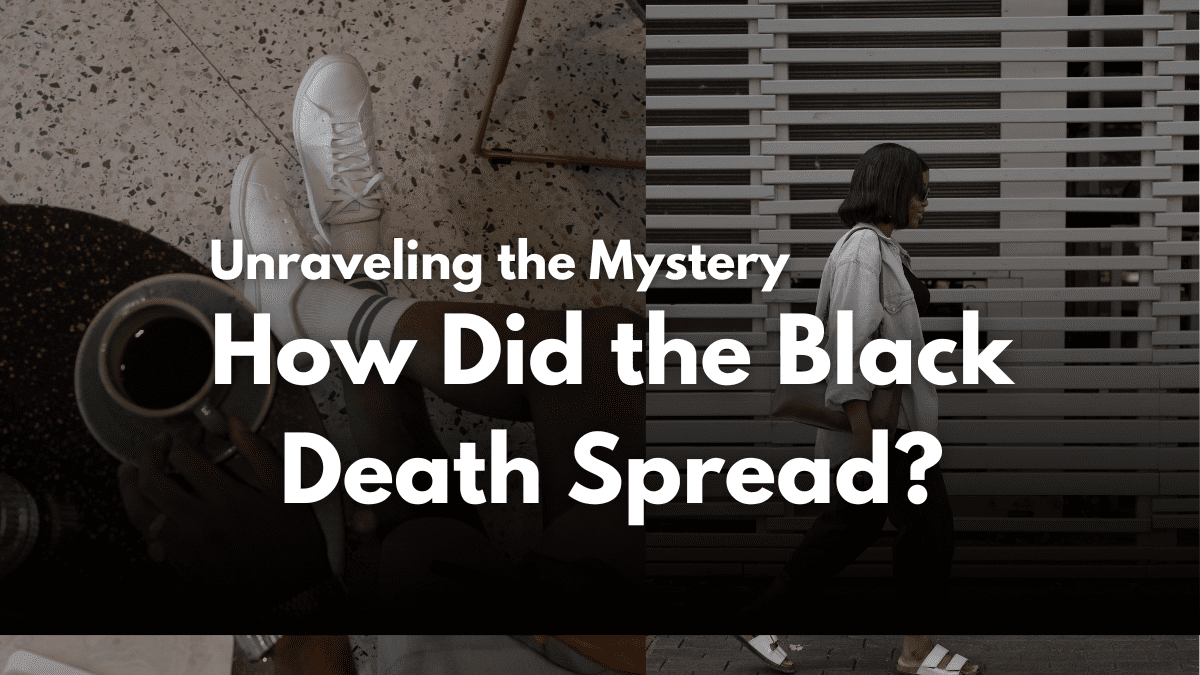Contents
How Did the Black Death Spread?
Black Death – Picture this: it’s the 14th century in Europe, a time of prosperity, trade, and cultural revival. Suddenly, a shadow falls upon the continent. The Black Death, a devastating epidemic, takes hold and wipes out a significant portion of the population. But how did this deadly disease spread so rapidly? In this article, we will delve into the intricate web of factors that facilitated the gruesome transmission of the Black Death.

The Origins: A Brief Introduction
Before we embark on our exploration, let’s take a moment to understand the origins of the Black Death. The plague is believed to have originated in the arid plains of Central Asia, with rodents and fleas acting as carriers. Eventually, these tiny creatures would become terrifying vectors for a deadly bacterium, Yersinia pestis. From its inception, the Black Death’s journey was extraordinary, fueled by a series of interconnected factors.
Close Quarters: The Role of Trade and Travel
The bustling medieval trading routes were vital lifelines, connecting distant lands and cultures. Unfortunately, they also served as highways for the Black Death. As travelers and merchants navigated the Silk Road and other trade routes, they unknowingly carried infected fleas in their luggage and on their bodies. These fleas found new hosts on ships, caravans, and bustling marketplaces, spreading the disease like wildfire from one population center to another.
The Black Plague: Understanding the Devastating Impact of the Black Death 2024
Pneumonia Treatment- Best Foods in the USA For Pneumonia Treatment
Choked by the Silk Road: Asia to Europe
The Silk Road, a network of trade routes stretching from China to the Mediterranean, was a vital conduit for cultural exchange. Traders transported precious goods, but they also unknowingly transported the Black Death across vast distances. It is believed that the bacterium traveled from Asia to Europe through black rats infested with fleas, hiding amidst the luxurious silks and exotic spices.
“The Silk Road brought wealth and knowledge, but it also ushered in an unseen horror, lurking within the shadows of caravans and treasure-laden ships.”
Seaside Invasion: Ports and Harbor Cities
The maritime routes played an equally pivotal role in disseminating the Black Death. Ports and harbor cities were bustling hubs of commerce, welcoming ships from all corners of the known world. Rats, carrying infected fleas, disembarked along with the cargo, infecting unsuspecting populations in the process. These areas suffered catastrophic outbreaks, and the disease radiated outward, reaching even the most remote corners of Europe.
Human Movement: The Speed of Infection
People, driven by ambition, misery, or curiosity, have always been adventurers. Unfortunately, their travels also facilitated the rapid spread of the Black Death. The nomadic lifestyle of the Mongols and the vast armies of medieval Europe inadvertently acted as vehicles for the disease.
The Mongol Menace: Horde on the Move
The Mongol Empire, stretching from the Pacific to Eastern Europe, was an unruly force during the 14th century. As they galloped across continents, they left a trail of destruction in their wake. But more than just destruction, the Mongol Horde carried the Black Death along with them, enabling its reach to extend far beyond what was previously imaginable.
Crowded Crusades: Pilgrimage to Death
The Crusades, a series of holy wars fought during medieval times, gathered people from all walks of life. Knights, soldiers, and pilgrims traveled long distances, converging in massive armies. Unfortunately, these gatherings of humanity became hotbeds for the spread of the Black Death. As troops disbanded after battles or soldiers returned home, they inadvertently carried the disease back to their communities.
Village and City: The Deadly Dance of Urban Life
In medieval Europe, the population was primarily concentrated in villages and cities, forming a complex tapestry of tightly knit communities. This close proximity, coupled with poor sanitation and hygiene practices, created the perfect breeding ground for the Black Death.
City Centers: The Heart of Darkness
Cities, with their teeming populations and cramped living conditions, became breeding grounds for the Black Death. Impoverished neighborhoods, characterized by overcrowding, unsanitary living conditions, and limited access to clean water, were particularly vulnerable. Here, the disease thrived, infecting and claiming countless lives.
Rural Exodus: The Flight from Death
In a desperate bid to escape the grim specter of death, many villagers fled the countryside and sought refuge in nearby towns and cities. Little did they know that, in their flight, they carried the Black Death with them. These refugees unknowingly brought the disease to urban centers, further fueling its spread.
A Dark Legacy: Reflection and Remembrance
The Black Death left an indelible mark on human history, reshaping societies and forever altering the course of civilization. The terrifying speed and breadth of its spread serve as a stark reminder of the fragile nature of human existence, and the profound impact that diseases can have on our lives.
As we look back on this tragic chapter in history, let us not forget the importance of vigilance, preparedness, and collective responsibility in the face of future pandemics. Together, we can ensure that the lessons of the Black Death are not lost to time.
“History has a way of reminding us of our vulnerabilities and the importance of unity in the face of adversity.”
External Links:
- For more information on the impact of the Black Death, visit: www.history.com
- To explore the cultural implications of the Black Death, check out: www.nationalgeographic.com

